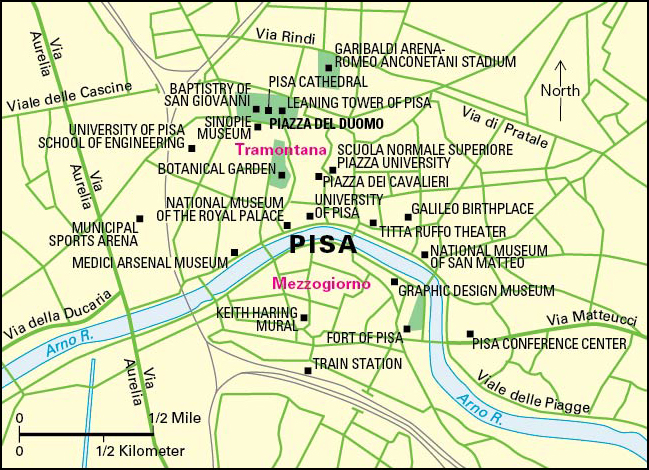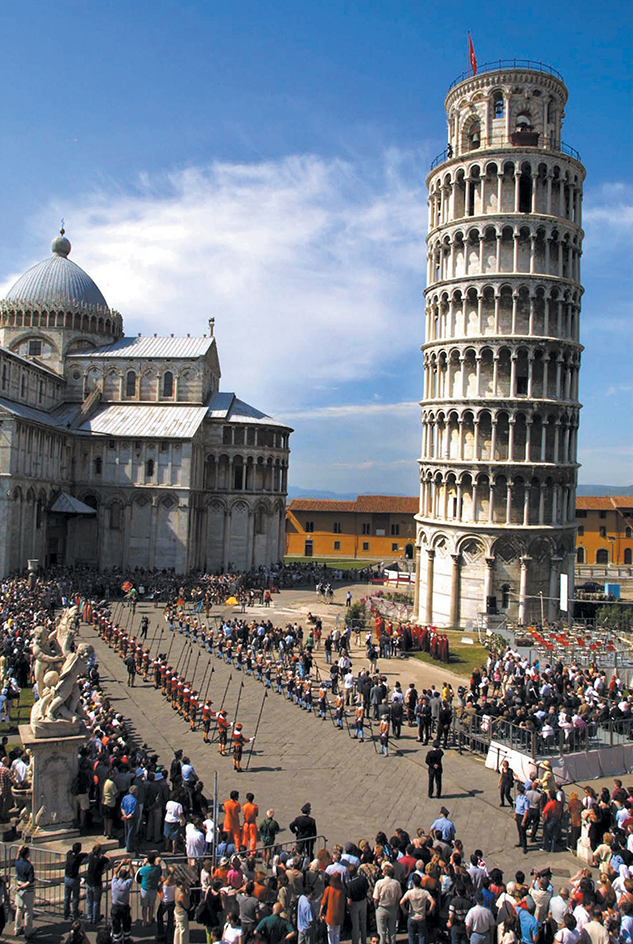Pisa << PEE zuh >> (pop. 89,828) is an old Italian city famous for its marble bell tower. The tower, known as the Leaning Tower of Pisa, leans to one side because its foundation was built on unstable soil. Pisa lies on the Arno River in Tuscany, a region of central Italy. The city is about 6 miles (10 kilometers) east of the Ligurian Sea.

Pisa was once an ancient Roman port and naval base. In the A.D. 1000’s, it became a prosperous maritime republic—a city-state near the sea. A city-state consisted of a city or town and the surrounding villages and farmland. Genoa, another maritime republic, defeated the Pisan navy in 1284. Pisa then began to decline. By the early 1400’s, the city was ruled by the nearby city-state of Florence. Pisa became part of the Kingdom of Italy in 1861.
The Arno River divides Pisa into two areas: Tramontana to the north, and Mezzogiorno to the south. Walks on the lungarni—streets along the Arno—lead to stately palaces and lovely bridges and cathedrals. A wall built in the 1100’s still surrounds much of the old city. The University of Pisa was founded in 1343. The Piazza del Duomo, which includes the Leaning Tower, is a World Heritage Site. Such sites are places of unique cultural or natural importance.

Pisa was badly damaged by bombs during World War II (1939-1945). The city was rebuilt after the war. Today, Pisa is a popular tourist destination and manufacturing center. The house where the scientist Galileo was born in 1564 still stands in Pisa.
See also Tuscany.
